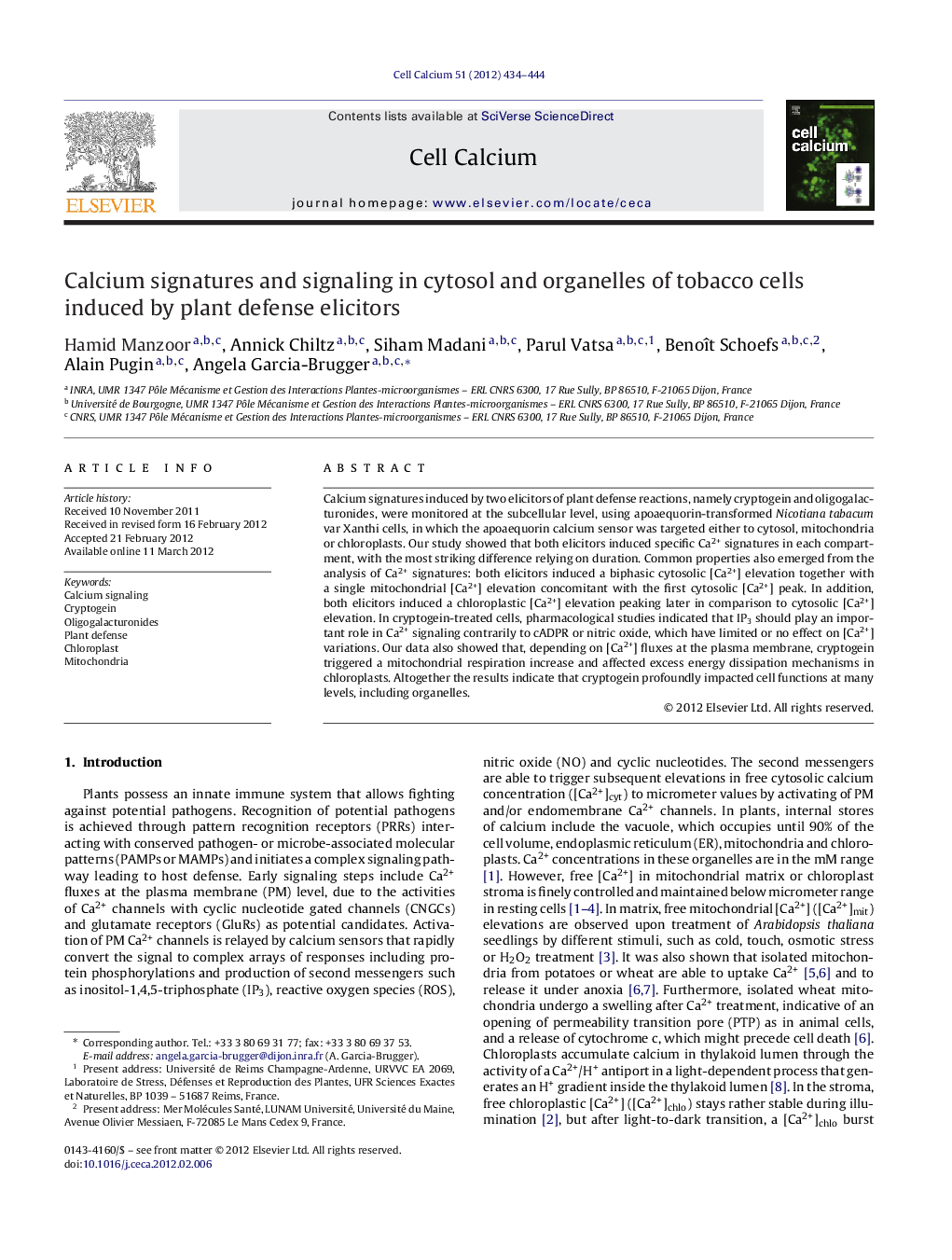| Article ID | Journal | Published Year | Pages | File Type |
|---|---|---|---|---|
| 2166033 | Cell Calcium | 2012 | 11 Pages |
Calcium signatures induced by two elicitors of plant defense reactions, namely cryptogein and oligogalacturonides, were monitored at the subcellular level, using apoaequorin-transformed Nicotiana tabacum var Xanthi cells, in which the apoaequorin calcium sensor was targeted either to cytosol, mitochondria or chloroplasts. Our study showed that both elicitors induced specific Ca2+ signatures in each compartment, with the most striking difference relying on duration. Common properties also emerged from the analysis of Ca2+ signatures: both elicitors induced a biphasic cytosolic [Ca2+] elevation together with a single mitochondrial [Ca2+] elevation concomitant with the first cytosolic [Ca2+] peak. In addition, both elicitors induced a chloroplastic [Ca2+] elevation peaking later in comparison to cytosolic [Ca2+] elevation. In cryptogein-treated cells, pharmacological studies indicated that IP3 should play an important role in Ca2+ signaling contrarily to cADPR or nitric oxide, which have limited or no effect on [Ca2+] variations. Our data also showed that, depending on [Ca2+] fluxes at the plasma membrane, cryptogein triggered a mitochondrial respiration increase and affected excess energy dissipation mechanisms in chloroplasts. Altogether the results indicate that cryptogein profoundly impacted cell functions at many levels, including organelles.
